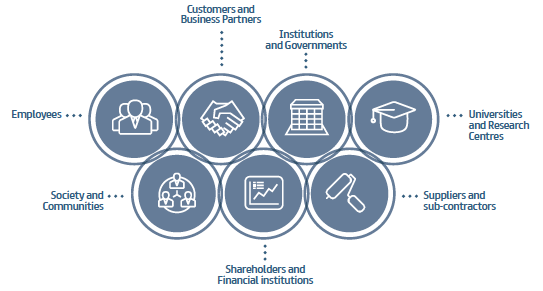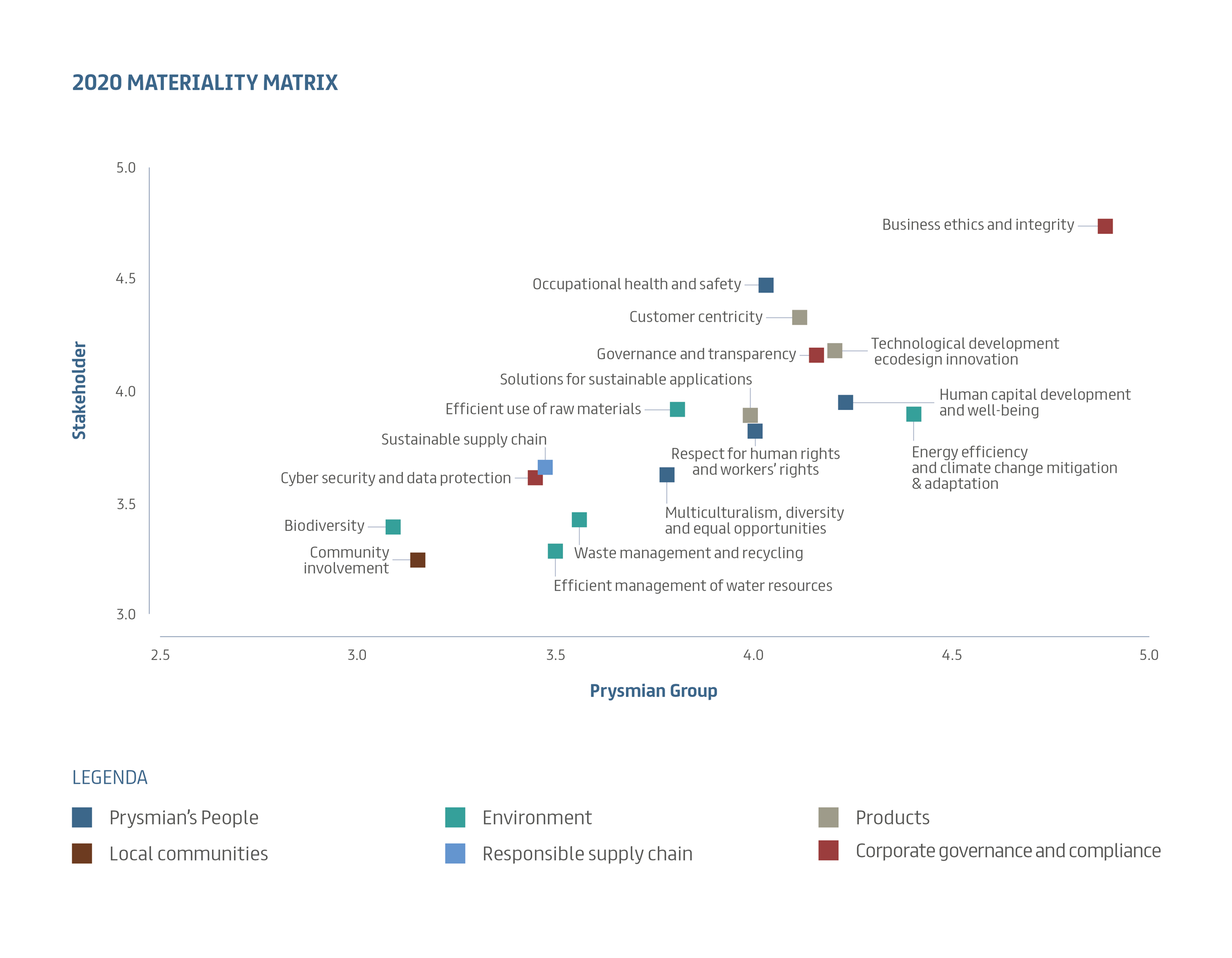The event, which is held annually, involves customers, suppliers, local communities, universities and research centres, NGOs, public administrations and environmental representatives in workshops and open discussions on topics related to sustainability and corporate social responsibility. This interaction is increasingly integral to growth strategy because discussions feed into Prysmian’s sustainability efforts.
Participants make a significant contribution to identifying the main impacts of Prysmian’s actions on various stages of the value chain, and make suggestions on how to improve. Senior management is directly involved through special interviews related to sustainability reporting. This feedback is used by Prysmian to create a materiality matrix that helps set sustainability goals and priorities.






